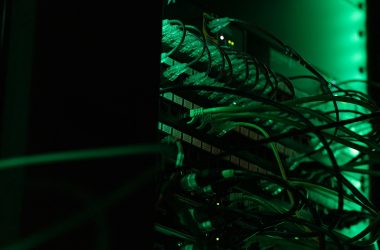

In August, global hosting provider Leaseweb acquired iWeb, a Canadian hosting company with three data centers among its resources that was previously part of INAP. HostingJournalist sat down with Leaseweb Canada CEO Roger Brulotte to learn more about this acquisition, about Leaseweb’s plans with these data centers, and about the company’s strategy for the North American market.
“When we were looking to expand our global presence, we analyzed a number of markets to identify where there was a need,” said Roger Brulotte. “We noticed prospective customers having an increased desire to expand their business to the entire scope of North America and gain the flexibility to control which market they operate in. We knew solidifying the Canadian market would be of optimal importance for our future growth as a company and help us to fully enclose the loop of the North American market.”
Leaseweb now manages three ‘climate-friendly’ data centers as a result of the acquisition. How sustainable are these data centers exactly?
“Our data centers’ efficiency levels are measured using PoE factors. Metrics include the type of power utilized, how much free cooling is used, and the amount of power needed to run the infrastructure. We are fortunate that our Canadian data centers are centrally located in one of the country’s best ‘green’ regions, the Province of Quebec. We plan on continuing to invest and update our infrastructure to align with Leaseweb’s efficient design standards within the next coming months.”
According to our information, Leaseweb is a provider of hosting infrastructure, not so much a data center operator.
“Returning to Leaseweb’s roots, data centers were always at the core of our operations. Now, having secured one of the largest ‘green energy’ provinces, Quebec, we have the ability to own and operationalize our own data centers. This positions us strongly within the competitive landscape, as now we can control our data center’s cost and efficiency levels.”
“At Leaseweb, we also have a large talent pool that shares in-depth knowledge and experience in managing data centers. By acquiring iWeb, we have gained even more talent within this sector, while now we have insight into the local marketplace and how it operates. This enables us to solidify a prominent role within the North American market, while simultaneously building our global presence.”
Leaseweb formerly used its sister company EvoSwitch as a provider of green data centers under the OCOM consortium. Despite selling Evoswitch Netherlands in 2018 for €205 million to Iron Mountain, the company is still active as a worldwide data center operator under the name EvoSwitch. Additionally, this firm seems to employ a number of people once again.
What additional revitalization of the data center business within the OCOM Group and the EvoSwitch brand name does the acquisition of the three energy-efficient iWeb data centers bring about?
“At this point, we’re still strategizing over our approach, and we will share it as soon as we’ve solidified our plans.”
Regarding the current energy crisis and rising energy prices. What impact does the energy efficiency of your data centers have on the provision of hosting services?
“Overall, as a global company, we see a raise not only in energy but also in the supply chain costs. The increased use of digital services has been a global trend as organizations move to the cloud as a way to offset energy costs and improve sustainability. As a result, we do our best as Leaseweb to make the most sustainable choices.”
Leaseweb has had a presence in the U.S. market for some time. What makes Leaseweb’s presence in the Canadian market so important?
“Solidifying a prominent position within the Canadian market enables us to close the entire North American marketing loop. Even with Leaseweb Canada operating as a separate entity, we recognize it as a global effort. Our customers have already established themselves within one of Leaseweb’s pre-existing markets, but now we want to offer them the flexibility to expand their businesses’ reach. The acquisition positions Leaseweb extremely well because the Canadian market favors Canadian infrastructure, allowing us to both satisfy the needs of our current customers and attract new ones.”
Despite being one of the biggest IaaS providers globally and having been around for a while, Leaseweb does not have a history of making many acquisitions.
“It is important to us that growth is done correctly and for the right reasons. We have a focused acquisition strategy, where we do smart acquisitions, with the cultural fit/compatibility being one of the important aspects. The strategy is based on geo segments and technological capabilities of both sides so the impact is an overall positive one.
What specific growth plans are you pursuing as CEO of Leaseweb Canada?
“We developed a dual- go-to-market strategy. This strategy aims to introduce pre-existing product offerings to existing customers while working to acquire new customers across Canada. We have a solid base of customers, however, we need to increase our revenue from these select groups.”
“For example, we recently added our Elastic Compute product in Canada. This provides our global and local customers infrastructure scalability that seamlessly reaches into Canada. It gives them the ability to spin up or spin down new instances at any time without waiting for manual approvals or lengthy processes.”
“Being a part of the highly fragmented IaaS industry, it’s easy for customers to seek out services anywhere. Therefore, it’s essential we actively go after new customers and introduce ourselves to the large market within the region. We plan on introducing ourselves across the five main markets in Canada including Montreal, Vancouver, Quebec, and Toronto, and look to expand our reach to the other fifty smaller markets across the region. As this is a global move, it’s important to look in our backyard first.”
“Larger players in the market have not strictly focused on extrapolating all the value from the Canadian market. They often have reduced flexibility. We aim to bridge the gap, by offering services that can compete with the larger market players, but differentiate our services with a more personalized and consumer-centric approach. We want to bring it back to the basics, and properly invest in our customers’ needs.”
– interview continues below the photo –


In a deal valued at approximately $145 million, iWeb was previously acquired by IaaS hosting provider INAP in 2013. Just as Leaseweb now, INAP was then talking about major synergies between the two companies while they subsequently sold it anyway. To what extent is Leaseweb’s acquisition of iWeb different now?
“The difference is that we already have a wide portfolio of products, as well as a mature set of systems and automation that we can roll out across Canada. This product line is a perfect fit for the Canadian market and will allow the new combined Canadian organization to quickly bring a line of products to market that customers are requesting.”
“In the past 18 months, we have successfully integrated iWeb into Leaseweb Canada. We attribute this success to our knowledge around making prudent investments in technology and people. When we acquired iWeb, we set out to take both organizations to the next level. iWeb helped us expedite the process, by establishing a well-formulated roadmap and fulfilling a global need within the market. We used this foundation to then connect with future customers and expand our global presence.”
What distinguishes it from INAP’s prior takeover of iWeb as having a better chance of success?
“We immediately recognized that the products and services offered by Leaseweb would be a perfect fit for the Canadian market and the iWeb team. We formulated a plan and then invested and allocated our resources within those respective areas. We began by leveraging the right platforms and teams to support the growth of Leaseweb Canada.”
“Leaseweb is already an established entity as a prominent global market player. Moving forward, we want to ensure our Canadian organization maintains Leaseweb’s core values, but still reflects the needs of our Canadian customers. I think that global/local vision will be the key to achieving optimal success.”
iWeb stated it just completed integration within the Leaseweb brand. What does this indicate for clients in Canada and elsewhere?
“Our Canadian team is rapidly moving from a local to a global scale. Once we have our SAP integration complete, customers will have access to a larger footprint and an extensive portfolio of services including public and private cloud. We began to notice our customers were looking to expand their global presence, so we wanted to be proactive in filling that need. By acquiring iWeb, we can begin penetrating the Canadian market and provide our customers with the flexibility in expanding their business models. In the next fiscal year, we look forward to providing our customers the ability to expand their global presence and offer an ecommerce platform to leverage.”
You yourself have a respectable professional background in the field, holding executive roles at several well-known businesses including Zayo, Cologix, and Level 3 Communications. In light of your professional background, what should Leaseweb Canada’s next go-to-market strategy take into account?
“Our biggest differentiators have been the culture and the people. For me, it’s important that I can see an alignment between my personal values and what an organization believes. When I joined Leaseweb earlier this year, I immediately saw how committed and genuinely caring the team was. They had a much more holistic approach to growth, where team members aimed to build over the long term versus from quarter to quarter. It’s not too often you see an entire team focused on promoting the longevity of an organization.”
“In addition, I found continuity in the select audiences and services we offer enabling us the ability to expand our reach over various sized markets. Moving forward, I want to ensure we build a go-to-market strategy that aligns with the team’s long-term goals and aspirations. It always goes back to our people. We want to provide a clear growth path that everyone on the team can get behind and support. As we continue to grow, our customers will begin to see our values reflected in our strategies. We aim to foster strong continuity among all communications and provide our consumers with a clear picture of the value we can bring to not only the Canadian market but Leaseweb as a whole.”






